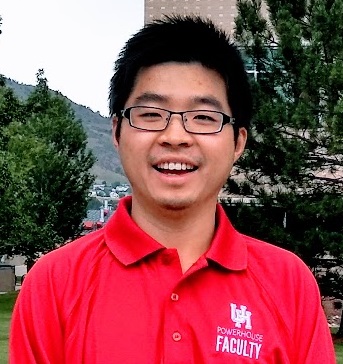Potential Fields SIG: Tackling magnetic remanence problem using a novel machine learning-based inversion method*-May17th

Meeting Location:
HESS Club (Houston Engr. & Science Society)
5430 Westheimer
Houston, TX 77056
NOTE: You Must Be Logged In to Register
Speaker: Dr. Jiajia Sun, University of Houston
Magnetic data is among the most widely used geophysical data for characterizing the crustal structures which is of critical relevance to achieving societal goals. For example, in oil industry, the magnetic data is frequently collected for reconnaissance explorations in frontier areas, providing insights into the basin structures. For mineral exploration, magnetic data contains important information about the location and size of iron and sulfide deposits, as well as hydrothermal alternation zones. Magnetic data are also used for understanding the crustal structures and geodynamic evolutions underneath volcanoes and geothermal sites. Despite the cost-effectiveness and widespread use of magnetics in petroleum and mineral explorations as well as volcanic and geothermal studies, interpretation of magnetic data has been long hindered by the pervasive existence of remanence.
We have recently developed a new approach to interpreting magnetic data complicated by remanence. This new method is a direct outcome of cross-fertilization between classical geophysical inverse theory and an unsupervised machine learning technique, fuzzy c-means (FCM) clustering. This new inversion method, termed magnetization clustering inversion (MCI), directly inverts the measured magnetic total-field anomaly for a distribution of magnetization vectors, and constrains the magnetization directions to show region-wise consistency in spatial domain and tight clusters in the crossplot of inclinations against declinations. We have obtained very encouraging results from our preliminary studies. Compared with existing methods, this new method does not perform any data transform (e.g., component conversion and amplitude calculation), does not require isolation of magnetic anomalies, and represents a direct and generally applicable approach to the remanence problem.
In this presentation, I will explain the concepts and thought process involved in developing MCI. The audience can expect to develop a conceptual understanding of how this new inversion method works. I will also briefly talk about the optimization algorithm that we have developed to solve the inverse problem. The focus of my presentation will be on several practical application examples using data sets from Australia and Brazil.
Speaker Biography: Dr. Jiajia Sun, University of Houston
Dr. Jiajia Sun is Assistant Professor of Geophysics in the Department of Earth and Atmospheric Sciences at University of Houston. He obtained his B.Sc. in Geophysics from China University of Geosciences (Wuhan) in 2008 and his Ph.D. in Geophysics from the Colorado School of Mines in 2015. His current research focuses on (1) solving magnetic remanence problem by integrating geophysics and machine learning, and (2) developing joint interpretation and inversion methods for multiple geophysical data sets. He is Active Member of SEG, member of AGU and EAGE, and serves in the SEG Gravity and Magnetics Committee. He received honorable mention for Best Paper in GEOPHYSICS in 2015, and Best Paper in the Mining sessions at the 2016 SEG Annual Meeting.
5:30 Registration / Cash Bar
6:15 Dinner Served
7:00 Presentation Begins
8:00 Adjourn
Price List:
|
Pre-Registered |
Late/Walk-Up
|
Member
|
$35 |
$45 |
| Non-Member |
$40 |
$50 |
Student Member
|
$15 |
$25 |
*HESS Club requires 3 days notice for a vegetarian dinner order. Please make request below, thank you.